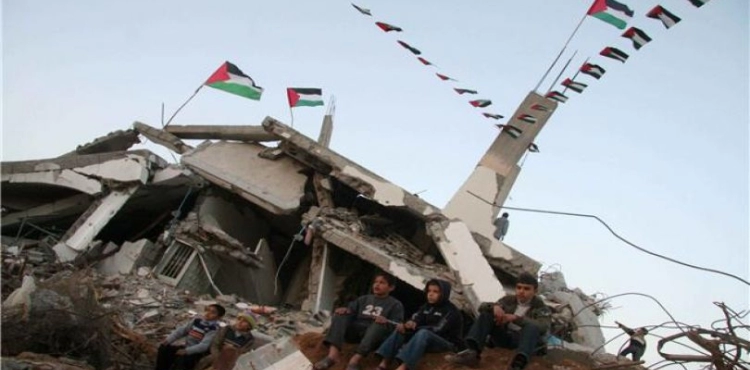How can the oppression ignite the flame of this challenge to the Gazans? Year after year the Israeli occupation is unfortunately waiting for a white flag here or there, and since the succession of events, the Gazans are increasingly whipping and insisting on imposing the equilibrium of steadfastness and fortitude.
A citizen of Gaza, asked through a satellite TV, about his feelings after the occupation of the warning rocket, and their departure quickly, before he followed him by a second missile, five minutes later destroyed the building he owned, by saying: "If you destroy all our homes. We are with the Resistance ".
Although the message of the occupation is that "within a few minutes we can destroy all that you have built over many years", the words of the Gazan citizen are shattered on the threshold of that message, and a state tongue says, "yours occupation of power and strength, you failed to destroy or threaten our spirits, and as we were with the Resistance we will remain on this covenant ", in defiance and determination to say its response to a more generous commitment.
Siege 13 years ago
"Gaza today suffers from a cumulative siege for 13 years, which means that we are in front of a generation born and living under siege, some of what died or were martyred in the siege," said the Spokesperson of the national Movement for breaking siege and reconstruction in the Gaza Strip, Mohamed Abou Awimar.
"Over the years there are people who have entered the schools and graduated from the universities under siege and there are those who have married and have been born under siege."
"The blockade has become a matter of the intensity of every Palestinian citizen, regardless of his economic situation before the blockade," he said.
Abu Awimar recounted a brief picture of the situation in the sector of the closure of crossings and payroll, especially in the last two years, as well as the closure of tunnels, the tightening of the naval blockade and the reduction of fishing space.
He pointed out that every time the occupation hits the wall, all the understandingings that the resistance and the Palestinian people are trying to extract to ease this blockade are finally broken.
"Spending has had a role in reducing the impact of the blockade, but today it is flooded with waste water and poisonous gas, which has claimed many lives in the martyrs´ life," he said.
He noted that the unemployment rate was 53.7 per cent, the highest in the world, and that 80 per cent of the population of the sector was below the poverty line, one of the highest in the world.
As for the monthly income of the individual, he explained that he did not exceed 200 per person (about $ 60) and many families were unable to obtain this minimum income.
Side effects of the blockade
Abu Awimar addresses the issue of drinking water, noting that 95 percent are not drinkable and require desalination, purification and filtering plants.
These stations are very few and barely enough for some residents, "and some areas are not able to bathe because of the high salinity of water," he said.
Power
Between Abu Awimar, the Gaza Strip sufferers from a severe electricity crisis for about 12 years, with the current power cut hours of 18-20 hours per day, and the current reaches 8 hours per house per day, as defined by the system (8 hours and 12 hours cut), and is likely to increase the hours of the cut, especially with the possibility of the power station stopping working.
The relief side
On the relief side, Abu Awimar points to the existence of a large number of associations, but the income is very low due to several factors including the bank tightening of remittances due to the blockade, including the departure of donors and contributors to other squares need assistance, especially in the Arab region which is becoming full to refugees, making the intake of these associations scarce and less than one year later as tensions in Arab countries widen.
"The Palestinian citizen is chaste with a lot of people in need and the lack of aid compels the Palestinian to sculpture in the rock in order to secure what fills his children´s hunger," he said.












